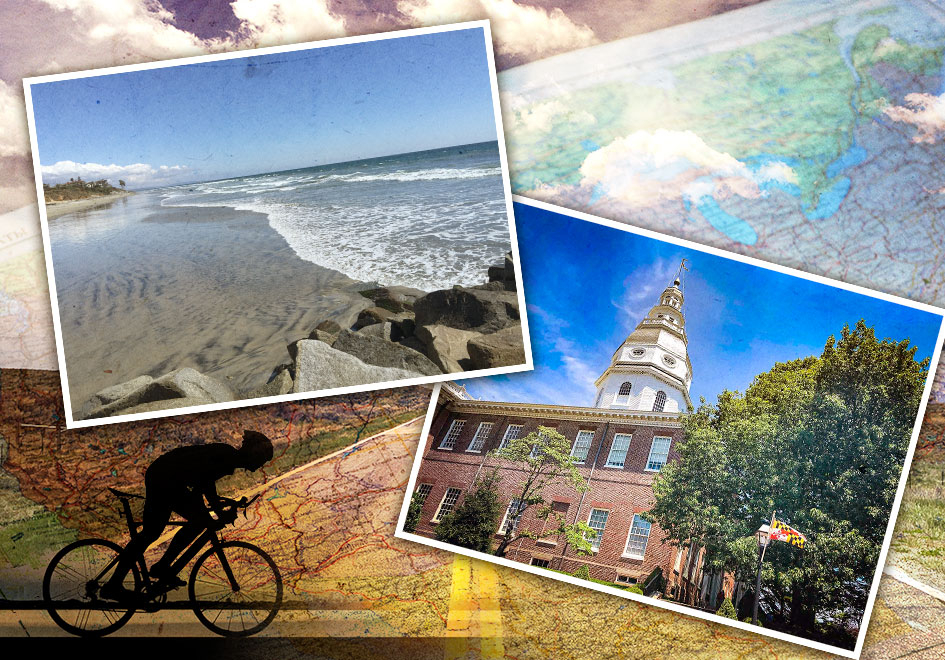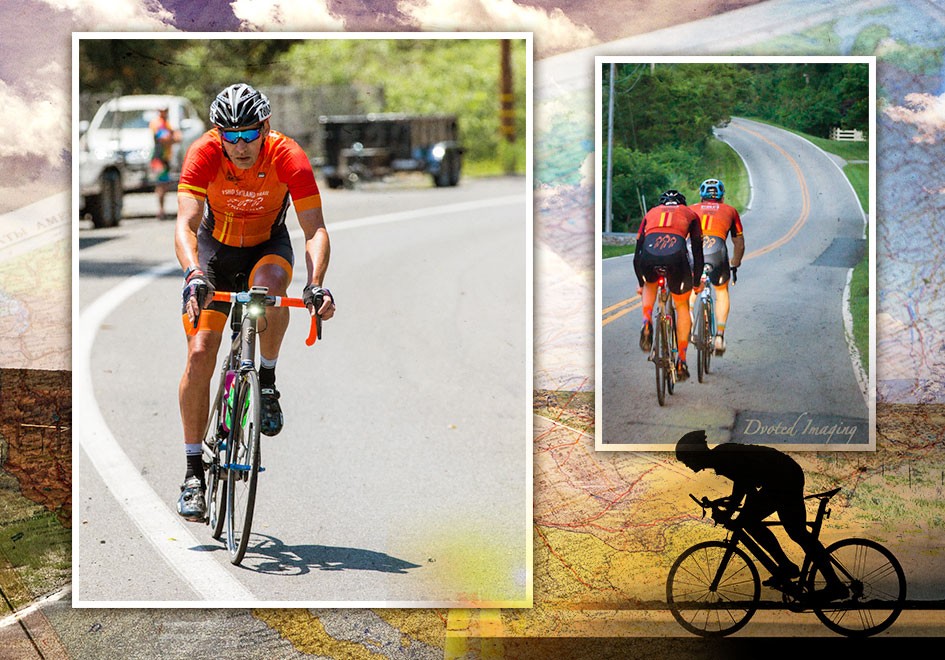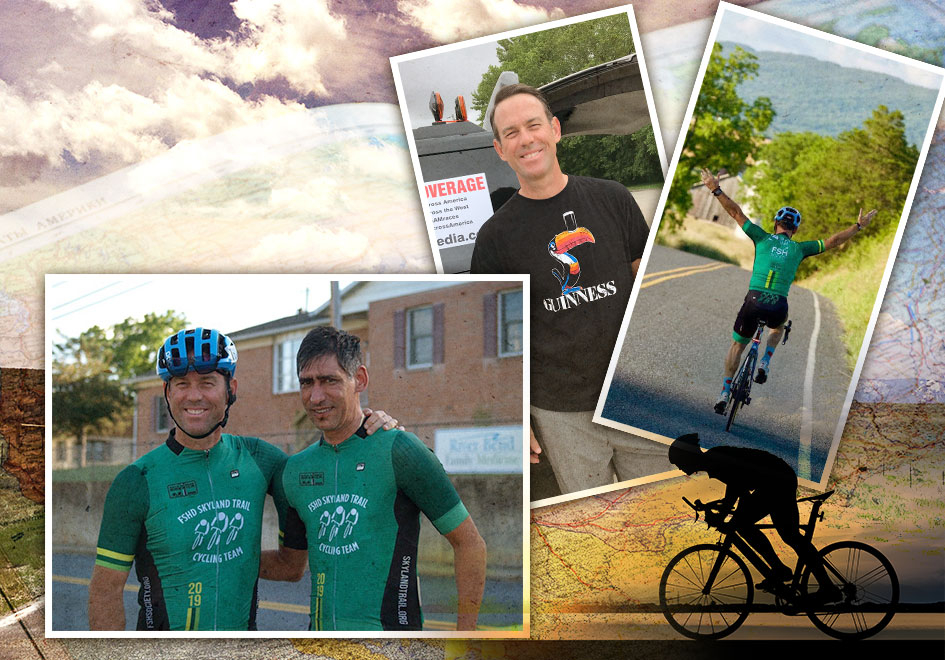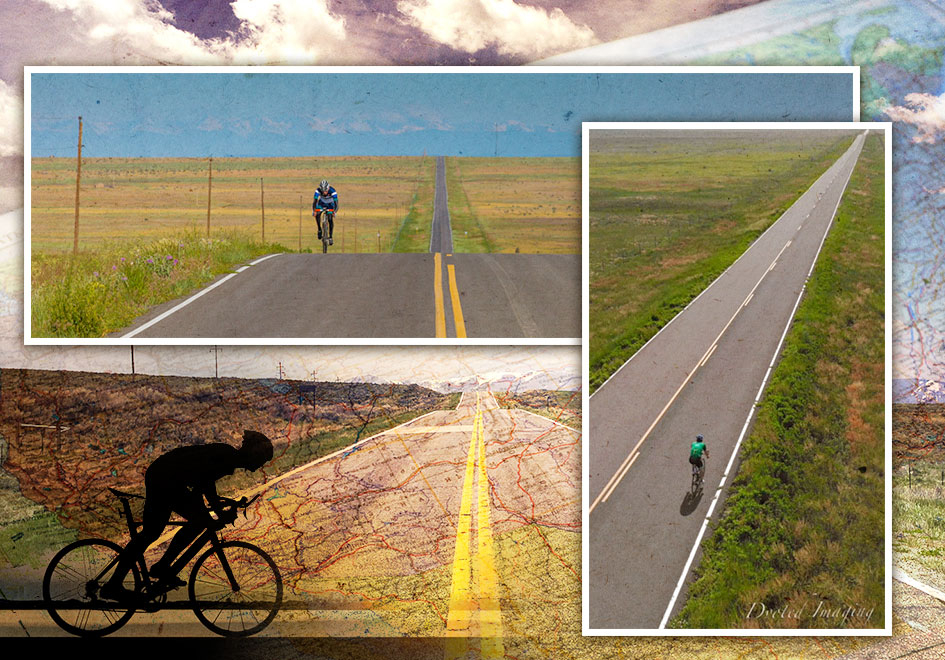“It’s a huge impact – a lot more than I would have expected,” said Scott Chambliss.
Chambliss, a mortgage production manager for Regions Bank in Tampa, Florida, was reflecting on the 38th annual Race Across America, a nationwide bike race that took him and his teammates on a journey from the California coast to Annapolis, Maryland, raising awareness and funding for two important causes along the way.
One cause: combatting a form of muscular dystrophy, a genetic disorder that gradually robs people of their strength through muscle weakness and atrophy.
The other: supporting mental health treatment that saves lives through holistic treatment and suicide prevention.
The causes are often intertwined as chronic health conditions are risk factors for depression and suicide.
“So many people are affected,” Chambliss shared. “We were in Oceanside, California, before starting the trip, and, just by chance, we ran into people whose family or friends were affected by mental health challenges or even the specific type of muscular dystrophy we’re targeting. They were coming out and thanking us for what we were doing. It was amazing – and it was another motivation to make a difference.”
So off they went.
The Race Across America draws cyclists from across the globe. Some are solo participants; others are on teams of two, four or eight people. Individual team members typically ride for 70 to 80 miles per day. During their shifts, other team members get stationed ahead, ready to take over when the current rider’s shift ends.
 The Race Across America begins in San Diego County, California, and ends in Annapolis, Maryland, crossing 12 states. Winding through the heart of the country, the route mostly avoids major cities and instead guides riders along two-lane roads through small towns.
The Race Across America begins in San Diego County, California, and ends in Annapolis, Maryland, crossing 12 states. Winding through the heart of the country, the route mostly avoids major cities and instead guides riders along two-lane roads through small towns.
Chambliss served his team as a crew member, taking care of riders and getting them in place and ready to take the torch as their next turn at the pedals began.
He was recruited by George Pollock, a friend and avid bike rider who is battling a specific form of muscular dystrophy. It’s called FSH (or sometimes FSHD) for short; its full name is facioscapulohumeral muscular dystrophy.
“It typically shows up in your face, where you can’t smile, or you can’t raise your arms above your head,” Pollock said. “But it can also affect parts of your lower body. Looking back, I was affected my whole life. I could never do a pullup. I was a slow runner. It wasn’t until I was experiencing muscle atrophy as an adult that I had a biopsy, which led to my diagnosis.”
Despite the diagnosis, Pollock pedals away – pressing toward a cure.
“You have to continue to move your body and do what you can,” he explained. “Exercise – even high-exertion exercise – is very important to try to keep your muscles strong. There’s still no cure. But there’s been a lot of work done in recent years. We’re getting there.”
 George Pollock devotes substantial time to increasing awareness of FSHD and raising money to fuel research that could ultimately lead to a cure. While the Race Across America is not a charity race on its own, teams have the option of leveraging the nationwide trek into fundraising opportunities for various causes.
George Pollock devotes substantial time to increasing awareness of FSHD and raising money to fuel research that could ultimately lead to a cure. While the Race Across America is not a charity race on its own, teams have the option of leveraging the nationwide trek into fundraising opportunities for various causes.
Another team member, Powell Brown, brought another important cause to the race.
“George did the Race Across America two years ago, and I gave him a contribution and was very interested in the entire experience,” Brown shared. “We talked a lot about it afterward, and I had made a commitment to ride. Between then and this year’s race, several people I know, or know of, were affected by suicide. That’s how I got involved with Skyland Trail in Atlanta, and that’s why I wanted to raise money for Skyland Trail during this year’s race.”
Guiding clients on a holistic path to mental wellness, Skyland Trail offers residential and day treatment options. Money raised by Brown and team during the Race Across America will benefit a new adolescent care facility that will focus on clients ages 14 to 17.
“The hope is that people who suffer from mental illness can get help before they go to college or experience an event that may be triggered by leaving home for the first time and experiencing new stresses in their lives,” Brown said. “I believe mental health challenges reach much further and deeper in our society than anyone has wanted to talk about it. I also have four teenaged children, and the impact of technology – just seeing the social media and the things that occur – the pressure on young people today is unlike anything when I was growing up. We have to address this.”
That’s exactly what they did. Through financial support raised by their participation in the Race Across America, Brown, Pollock, Chambliss and team raised a combined $1.3 million for Skyland Trail and the FSH Society. Further, they finished fifth among eight-member teams in the cross-country race.
 Race Across America teams have up to eight people. While one is riding, the others are shuttled ahead to the next stop, ready to take the lead as the journey continues.
Race Across America teams have up to eight people. While one is riding, the others are shuttled ahead to the next stop, ready to take the lead as the journey continues.
“This endeavor was a challenge for all involved, and our efforts encouraged many to contribute to the causes of FSHD and Skyland Trail,” Chambliss said, adding that the work-life balance provided by Regions, and the support of his colleagues in Tampa, gave him the backing he needed to take time away for the ride. “I’ve been blessed to have good health for most of my life, and this business has afforded me many opportunities that others may not have. The very least I can do is give back in time and treasure to help others.”
In addition to supporting worthy causes, Chambliss and team soaked up unique experiences along the way.
Brown thought back to a general store in the town of Kim, Colorado – population 50.
“They sell everything; they have coffee, food, books,” he said. “Behind the lady at the register are the ranch rules.”
Among the rules?
- Only swear at the cows.
- If it’s broke, fix it.
- Be honest.
Then there was the rainy night in Blanchester, Ohio.
“Some people who have FSHD drove down two hours from Columbus to greet us,” Pollock shared. “We had probably 15 to 20 people meeting us there in the pouring-down rain, and we were able to stop for a while and just chat and identify with each other.”
And that’s one more way these six days on the road made an impact. Yes, they were used as part of broader efforts to address long-term needs. Yes, they were physically grueling. But they were also important reminders of the strength we have in unity – and the encouragement and support we can receive from others.
“When you’re going across the country, and you meet these people from all backgrounds, you see how many great people there are all across America,” Brown concluded. “It was a bigger experience than I ever anticipated.”
 “There’s no better way to see the country than to ride your bike across it – and meet people.” —George Pollock
“There’s no better way to see the country than to ride your bike across it – and meet people.” —George Pollock